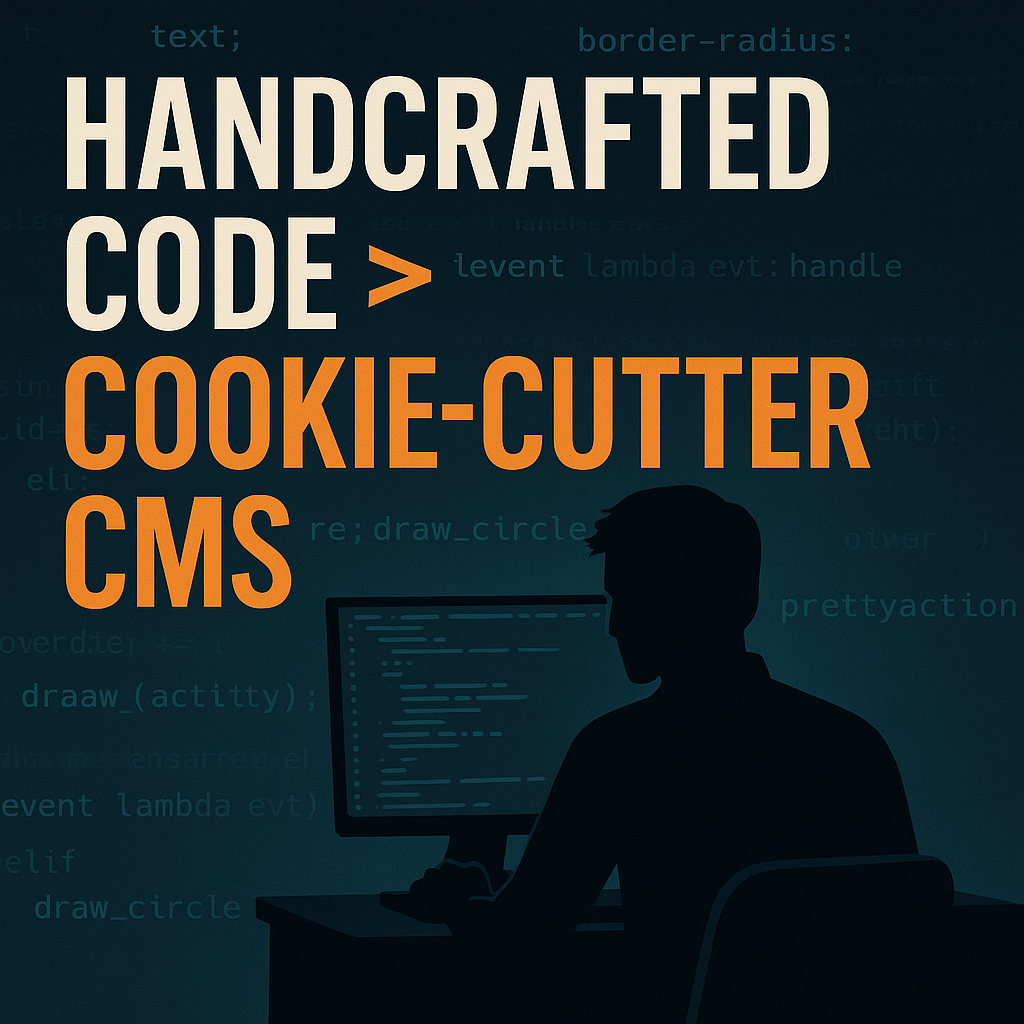Why I Ditched Wix & WordPress for a From-Scratch Portfolio

Why I Built My Portfolio from Scratch Instead of Using a CMS
1. Full Creative Control
As a software engineering graduate, I believe my portfolio should be a direct reflection of my skills and vision—something no pre-built template can fully capture. When you build everything yourself, you choose every color, layout, and interaction. That level of freedom isn’t just gratifying; it ensures your work looks and feels exactly how you imagined.
2. Demonstrating Technical Skills
Relying on platforms like WordPress or Wix may save time, but it doesn’t showcase your core competencies as a developer. By writing HTML, CSS, and JavaScript (or your favorite framework) from day one, you:
- Highlight Expertise: Recruiters and peers can see your clean code, architecture decisions, and problem-solving approach.
- Customize Performance: You control asset loading, optimize images, and fine-tune SEO—often impossible with canned templates.
3. Better Performance & Maintainability
Templates frequently bundle unused features or third-party scripts, which can slow down load times and create security risks. A hand-crafted site allows you to:
- Lean Codebase: Load only the libraries and plugins you need.
- Streamlined Updates: Upgrade dependencies on your own schedule and avoid breaking changes from forced CMS updates.
4. Cost Efficiency in the Long Run
At first glance, “free” templates seem cost-effective. But many platforms lock advanced features—custom domains, e-commerce modules, or premium support—behind paid tiers. Over time, those subscription fees often surpass the one-time investment of hosting a custom site.
5. Accelerated Learning Curve
Sure, drag-and-drop builders are intuitive—but mastering them can take weeks of trial and error, and you’re still limited by their frameworks. By coding your own portfolio, you:
- Learn by Doing: Troubleshoot cross-browser quirks, implement responsive layouts, and deepen your understanding of web fundamentals.
- Gain Confidence: Every solved bug or performance improvement feels like a personal victory.
6. Unique Brand Identity
Your online presence is more than just a résumé—it’s a digital handshake. A bespoke portfolio:
- Stands Out: No two templates are identical, but a custom build guarantees a one-of-a-kind experience.
- Communicates Professionalism: Clients and employers see you value craftsmanship over convenience.
Conclusion
While CMS platforms have their place—especially for nontechnical users—building your own portfolio is an investment in both your personal brand and professional growth. The result? A site that loads faster, looks exactly how you want, and, most importantly, proves you’re more than capable of solving real-world engineering challenges.
Written by
Sayidali Ibrahim